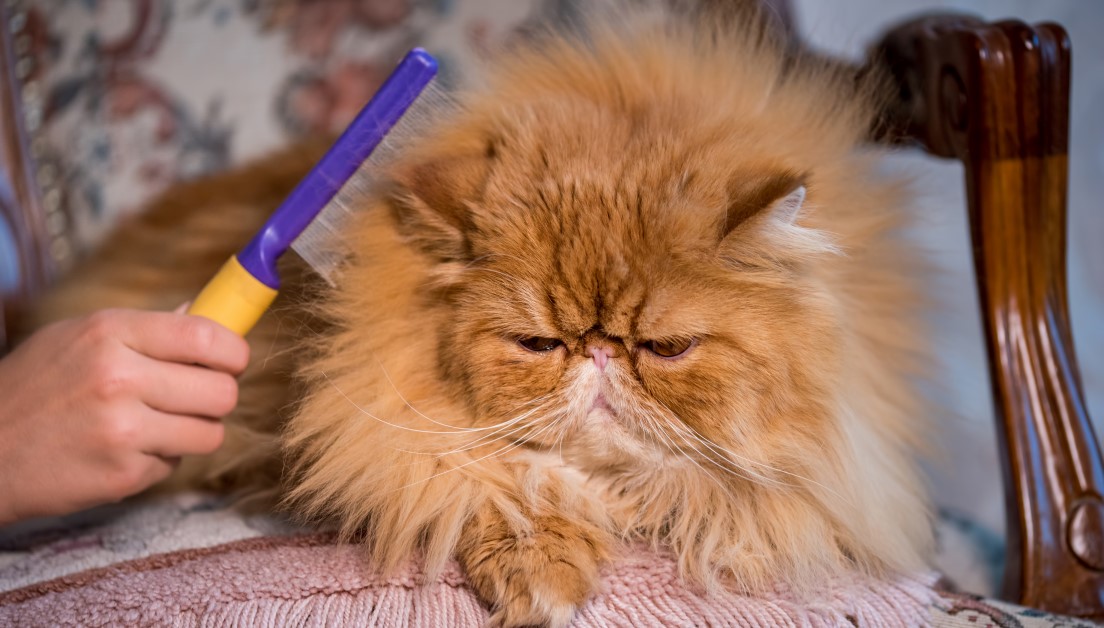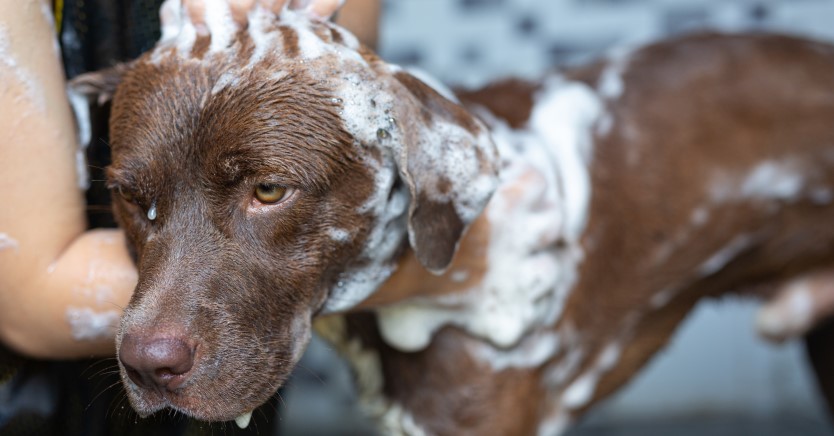How to Safely Remove Knots and Tangles from Your Pet’s Coat
Safely removing knots and tangles from your pet’s coat can help prevent matting and skin problems.

If you have a long-haired cat or dog, you know the challenge of untangling stubborn knots. However, knots and tangles in your pet’s coat aren’t just an aesthetic issue. Over time, mats can develop, causing irritation and possible skin infections. Let’s take a look at some of the most common causes of knots, tangles, and mats in cats and dogs, and how to safely remove them.
What Causes Knots and Tangles to Develop?
Knots and tangles are common in dogs and cats, especially those with curly or long hair. While cats are less likely to develop knots due to their rigorous grooming habits, cats too can develop tangles when loose hair becomes intertwined, forming tight knots.
If knots and tangles are not regularly removed, they can worsen over time. Both live fur and dead loose fur can clump together, especially in areas where there is a lot of friction, such as where the collar sits on the neck. Pets that spend a lot of time outdoors and encounter water and dirt are also more likely to develop knots, tangles, and mats.
Certain breeds are also more susceptible to knots and tangles. In dogs, this includes silky drop coat breeds like Yorkies, Shih Tzus, and Maltese. Double-coated dogs that have thick undercoats, such as Golden Retrievers and Cocker Spaniels, also develop tangles regularly.
In cats, the most common breeds susceptible to matting include Persians, Main Coons, Ragdolls, Siberians, and Himalayans. As cats get older, it can become more difficult for them to self-groom, increasing the likelihood of knots and tangles developing.
Ways to Safely Remove Knots and Tangles in Fur
While it’s not always possible to prevent knots from developing in your pet’s fur, you can remove them with the right tools and techniques.
Start by getting a good detangling shampoo. Give your pet a bath and gently work the shampoo through the fur, removing small tangles during the process. Bathing your pet can also help remove any loose hairs that could further contribute to the matting.
If bathing your pet isn’t an option, consider a detangling spray. A detangling spray acts as a leave-in conditioner that can be applied to your pet’s dry hair. Many detangling sprays also contain additional ingredients designed to add shine to your pet’s coat and soothe irritated skin.
One of the best tools for removing difficult knots and tangles is a slicker brush. A slicker brush consists of a brush head covered in short wire pins designed to effortlessly move through dense coats without harming the skin. Using short, gentle strokes, begin to work through your pet’s coat to remove tangles and knots.
If you discover mats as you work through the coat, isolate them away from the rest of the fur. Use one hand to hold the base of the mat to prevent uncomfortable pulling as you work to de-tangle it. Start the process at the top of the mat, the furthest point away from the skin.
In some instances, severe matting may be too difficult or painful for your pet to remove. In this instance, you’ll want to call in the professionals. Schedule a grooming appointment and have the groomer carefully work through the mats, or in some instances, cut them off and allow the hair to regrow.
Do not allow mats to continue to worsen over time. Severe matting can lead to hematomas, which occur when blood vessels are damaged and bleed below the skin’s surface.
How to Prevent Knots and Tangles in Your Cat or Dog
When it comes to knots and tangles, prevention is key. To help reduce tangles and prevent matting, brush your pet regularly, ideally once a day. When brushing, you’ll want to reach down to the skin to ensure you reach the underlayers of hair.
Use a dog shampoo that has a deep moisturizer to keep the fur soft and manageable. Depending on the length of your pet’s fur, you’ll want to bathe him every four to six weeks on average. Cats and dogs with shorter coats can be bathed less frequently, about every one to three months.
When drying your pet after a bath, never rub the fur with a towel as this can contribute to knots and tangles. Instead, you’ll want to pat dry your pet or use a blow dryer on a low setting as you brush through the coat.
What you feed your pet can also play a vital role in the overall health of their coat. Feed your pet a healthy diet filled with important nutrients, such as vitamins A, C, and E. Fatty acids omega 3 and omega 6 can be found in pet-friendly supplements that help prevent dryness and can help your pet maintain a visibly shiny and healthy coat.
Keeping Your Pet Free of Knots, Tangles, and Mats
Cats and dogs with coats that are free of knots, tangles, and mats not only look healthier but also feel better. Regular bathing and brushing can help prevent your pet’s coat from developing painful tangles that could irritate and infect the skin. If you’re having difficulty keeping up with your pet’s coat upkeep, consider finding a reputable groomer in your area.
Ready to start saving money on pet wellness care?
Then take a look at Mint Wellness, the pet wellness plan that provides fast reimbursement on routine pet care. Save on vaccinations, wellness exams, preventatives, dental, and more!
Learn More


